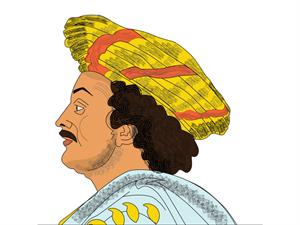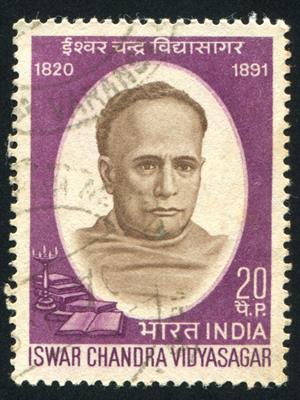
PUMPA - SMART LEARNING
எங்கள் ஆசிரியர்களுடன் 1-ஆன்-1 ஆலோசனை நேரத்தைப் பெறுங்கள். டாப்பர் ஆவதற்கு நாங்கள் பயிற்சி அளிப்போம்
Book Free DemoThe Social Reformation:
The Indian society witnessed a tide of change during the \(\text{19th century}\) as the social evils that prevailed in the society were questioned for the first time. The educated intelligentsia of India was exposed to the thoughts raised to the occasion.
The reformers took centre stage and proliferated the idea of education among the masses, which they believed would empower them.
The social evils of Indian society were fought against by the reformers of the \(\text{19th century}\), some of the important reformers and their contributions are discussed below.
Raja Ram Mohan Roy:
Raja Ram Mohan Roy was considered one of the most important personalities who had taken the crusade against the ills imposed by society on women.

Raja Ram Mohan Roy
He fought against the hegemony of Vedas and the rituals imposed on the women. He was a vociferous crusader of women rights all through his life.
Raja Ram Mohan Roy: He was a polyglot who was well versed in more than five languages. Due to his activities, he was rightly named the “Father of Indian Renaissance”.
He was considered as the greatest social reformer of modern India. Ram Mohan Roy was personally affected by the barbaric practice of Sati as his Sister-in-law was thrown into the fire after the death of his brother “Jagan Mohan Roy” in \(1811\).
Raja Ram Mohan Roy vowed to end this inhuman practice as he began his agitation and started printing pamphlets as the practice was not enjoyed by the Vedic Scriptures and Shastras.
When Lord William Bentinck became the governor-general, he abolished Sati bypassing the “Regulation XVII in 1829”, which abolished Sati in India.
Kandukuri Veerasalingam:
He was a renowned champion and a crusader of women rights in Andhra Pradesh during the 19th Century. He was a reformer, activist and writer.
He was credited as the first person to conduct a widow remarriage in Andhra, which was seen as taboo till that date.
Kandukuri Veerasalingam: He was a social reformer of Andhra known as the “Raja Ram Mohan Roy of Andhra”. “Gadya Tikkana” was the sobriquet given by the locals to him.
He was the first to open a school for girls in \(1874\). Viveka Vardhini was the journal published by Veerasalingam through which he propagated his education ideas.
Ishwar Chandra Vidyasagar:

Iswar Chandra Vidyasagar
He was a ceaseless crusader from Bengal who fought for the Widow remarriage of women in Bengal. A Bengali and Sanskrit Pandit and a reformer, he fought relentlessly against the opposition on widow remarriage.
Vidyasagar: He was the face of the renaissance in Bengal. People impressed by his vast knowledge and exploits awarded him the title “Vidyasagar – meaning the ocean of knowledge”.
Vidyasagar went on to follow the footprints of Raja Ram Mohan Roy, the visionary. He also wrote two volumes on Widow Remarriage and wrote petitions to the legislative council, which made way for the widow remarriage Act in \(1856\).